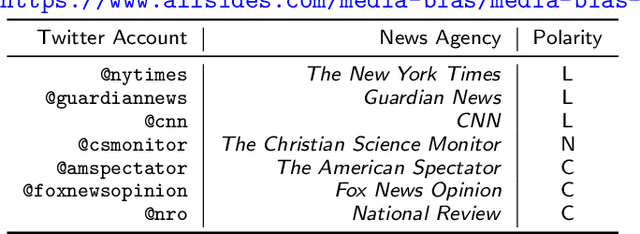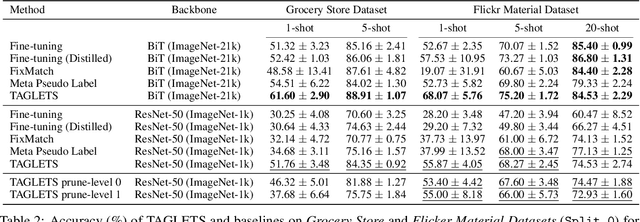Jeffrey Zhu
Detecting Political Biases of Named Entities and Hashtags on Twitter
Sep 16, 2022



Abstract:Ideological divisions in the United States have become increasingly prominent in daily communication. Accordingly, there has been much research on political polarization, including many recent efforts that take a computational perspective. By detecting political biases in a corpus of text, one can attempt to describe and discern the polarity of that text. Intuitively, the named entities (i.e., the nouns and phrases that act as nouns) and hashtags in text often carry information about political views. For example, people who use the term "pro-choice" are likely to be liberal, whereas people who use the term "pro-life" are likely to be conservative. In this paper, we seek to reveal political polarities in social-media text data and to quantify these polarities by explicitly assigning a polarity score to entities and hashtags. Although this idea is straightforward, it is difficult to perform such inference in a trustworthy quantitative way. Key challenges include the small number of known labels, the continuous spectrum of political views, and the preservation of both a polarity score and a polarity-neutral semantic meaning in an embedding vector of words. To attempt to overcome these challenges, we propose the Polarity-aware Embedding Multi-task learning (PEM) model. This model consists of (1) a self-supervised context-preservation task, (2) an attention-based tweet-level polarity-inference task, and (3) an adversarial learning task that promotes independence between an embedding's polarity dimension and its semantic dimensions. Our experimental results demonstrate that our PEM model can successfully learn polarity-aware embeddings. We examine a variety of applications and we thereby demonstrate the effectiveness of our PEM model. We also discuss important limitations of our work and stress caution when applying the PEM model to real-world scenarios.
TAGLETS: A System for Automatic Semi-Supervised Learning with Auxiliary Data
Nov 10, 2021



Abstract:Machine learning practitioners often have access to a spectrum of data: labeled data for the target task (which is often limited), unlabeled data, and auxiliary data, the many available labeled datasets for other tasks. We describe TAGLETS, a system built to study techniques for automatically exploiting all three types of data and creating high-quality, servable classifiers. The key components of TAGLETS are: (1) auxiliary data organized according to a knowledge graph, (2) modules encapsulating different methods for exploiting auxiliary and unlabeled data, and (3) a distillation stage in which the ensembled modules are combined into a servable model. We compare TAGLETS with state-of-the-art transfer learning and semi-supervised learning methods on four image classification tasks. Our study covers a range of settings, varying the amount of labeled data and the semantic relatedness of the auxiliary data to the target task. We find that the intelligent incorporation of auxiliary and unlabeled data into multiple learning techniques enables TAGLETS to match-and most often significantly surpass-these alternatives. TAGLETS is available as an open-source system at github.com/BatsResearch/taglets.
 Add to Chrome
Add to Chrome Add to Firefox
Add to Firefox Add to Edge
Add to Edge